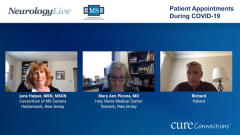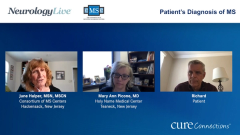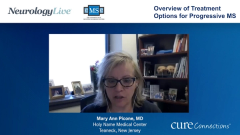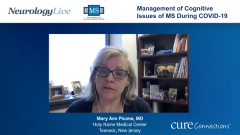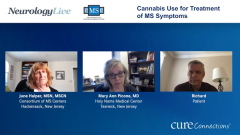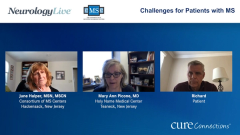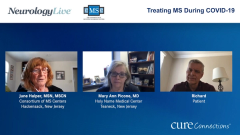
Overview of Treatment Options for Progressive MS
An expert neurologist discusses treatment options for progressive multiple sclerosis.
Episodes in this series

June Halper, MSN, MSCN: What does the conversation with the patients sound like? Do you talk about drugs in terms of some of the newer therapies, including 1 that’s probably still under investigation: Mayzent, Ocrevus, ibudilast? I think I pronounced that right.
Mary Ann Picone, MD: That’s a tough one.
June Halper, MSN, MSCN: I didn’t do very good there.
Mary Ann Picone, MD: It definitely is an interesting time. We are very fortunate that there are so many treatment options. It certainly is a much longer conversation nowadays than it was in the early 1990s, when there were no therapies until Betaseron was approved in 1993. Then people were arguing about the interferon therapies. Here’s what I try to do. It can be challenging. I feel that patients are coming to me at an MS [multiple sclerosis] center in particular because they really want to know what my recommendation is for them. It’s overwhelming for patients to be given an array of choices and then told, “You choose which medication to take.” I try to give a bit of an overview of the various treatments, starting with the treatments that have been around the longest: the interferon therapies and glatiramer acetate. These therapies have the longest track record in terms of safety, but efficacy can be a little lower compared with our newer agents.
Then I look at the second bucket of oral medications, of which Mayzent, or siponimod, is 1. Then I talk about the S1P1 receptor modulators as a class. I say that they are very effective therapies and also approved for the types of MS we talked about: relapsing and active secondary progressive MS. I mention that they’re higher in efficacy. They work by preventing the egress of lymphocytes from lymph nodes so that there are fewer inflammatory lymphocytes in the peripheral vasculature to enter the central nervous system [CNS] and cause the immune-mediated attack on myelin in the CNS. But there is a little more risk associated as we increase the higher efficacy. Then I talk about other oral medications that are available: Tecfidera, Aubagio, and now Mavenclad. As a second bucket, I look at Mavenclad, or cladribine, as a little higher in efficacy.
The third bucket contains the higher-efficacy therapies: the IV [intravenous] therapies, Ocrevus, Tysabri, and Lemtrada. Depending on a patient’s level of disease activity, there are many factors that go into the discussion: the age of the patient, the type of MS they have, how active their disease is, if they are planning to get pregnant in the near future, other medical comorbidities that the patient may have that could interact with a certain disease-modifying therapy, and lifestyle issues. Is someone going to be able to remember to take a pill every day, or would it be easier for them to come into the center to have an infusion done? We can also better monitor how they’re doing from visit to visit. It’s a long discussion, but it really has to be an understanding for the patient to know what’s going on, the importance of being on a disease-modifying therapy to slow down the disease process, risks of each therapy, and efficacy.
June Halper, MSN, MSCN: I want to thank our audience for watching this Neurology Live® Cure Connections®. If you enjoyed this program, please subscribe to our e-newsletter to receive information about other upcoming programs.
Transcript Edited for Clarity
Newsletter
Keep your finger on the pulse of neurology—subscribe to NeurologyLive for expert interviews, new data, and breakthrough treatment updates.

